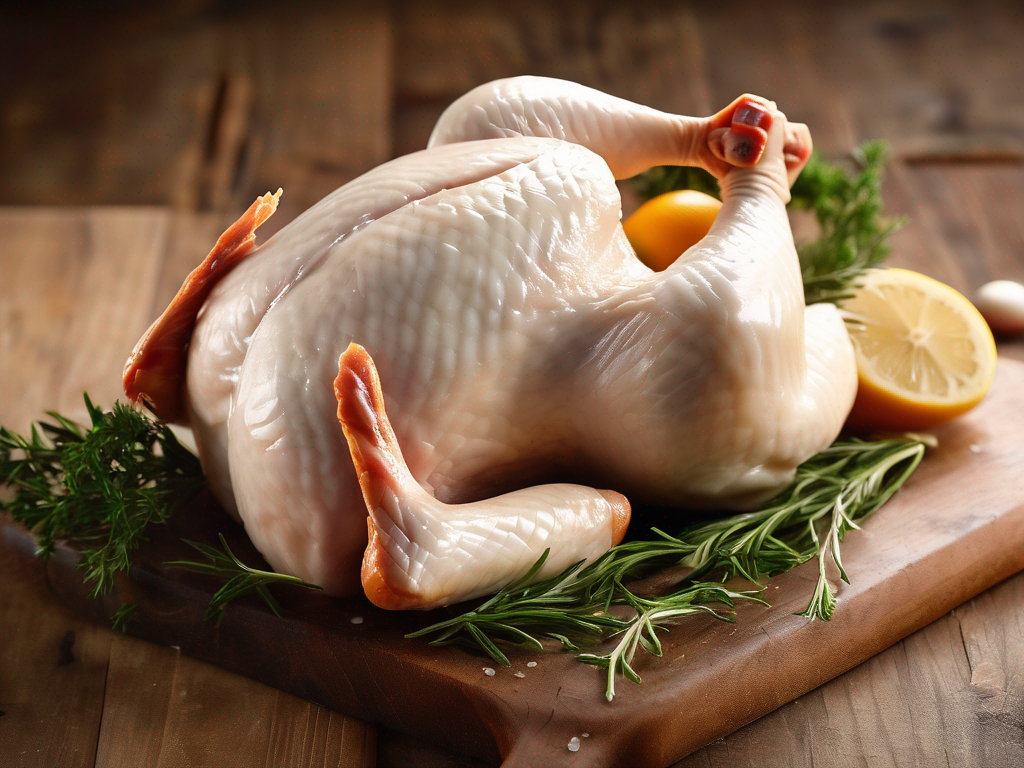
Signs that Chicken Whole Fresh Raw Sold Refrigerated Not Frozen has Gone Bad
Get Your Free Food Safety Cheat Sheet
30 most common foods with instant answers. Print it and stick it on your fridge—completely free!
Signs that Chicken Whole Fresh Raw Sold Refrigerated Not Frozen has Gone Bad
When it comes to food safety, proper storage and handling of chicken is crucial to prevent foodborne illnesses. Chicken is a popular protein choice for many households, but it's important to know the signs that chicken has gone bad to avoid getting sick. In this blog post, we will discuss the signs that whole fresh raw chicken sold refrigerated (not frozen) has gone bad and should be thrown out. (Chicken whole fresh raw sold refrigerated not frozen)
Understanding the Shelf Life of Fresh Raw Chicken
Fresh raw chicken sold refrigerated typically has a shelf life of 1-2 days in the refrigerator. It is important to check the expiration date on the packaging and consume the chicken before it spoils. Proper storage is key to maintaining the quality and safety of the chicken.
Proper Storage of Fresh Raw Chicken
When storing fresh raw chicken in the refrigerator, follow these guidelines to ensure food safety:
- Keep the chicken in its original packaging or reseal it in an airtight container.
- Store the chicken on the bottom shelf of the refrigerator to prevent cross-contamination with other foods.
- Keep the refrigerator temperature at 40°F (4°C) or below to slow down bacterial growth.
- Use the chicken within 1-2 days of purchase for the best quality.
Signs that Fresh Raw Chicken has Gone Bad
It is essential to be able to recognize the signs that fresh raw chicken has gone bad to prevent foodborne illnesses. Here are some common indicators that your chicken may be spoiled and should be thrown out:
1. Foul Smell
- Normal: Fresh raw chicken has a mild, slightly gamey odor.
- Spoiled: If the chicken has a strong, foul, or rotten smell, it is a sign that it has gone bad.
2. Change in Color and Texture
- Normal: Fresh raw chicken should have a pinkish color with white or yellowish fat.
- Spoiled: If the chicken appears gray, slimy, or sticky to the touch, it is an indication of spoilage.
3. Slimy Appearance
- Normal: Fresh raw chicken should feel moist but not slimy.
- Spoiled: A slimy film on the surface of the chicken is a clear sign of spoilage.
4. Presence of Mold
- Spoiled: If you notice any mold growth on the chicken, it is unsafe to consume and should be discarded immediately.
5. Expiration Date
- Spoiled: If the chicken has passed its expiration date, it is best to err on the side of caution and discard it, even if it looks and smells fine.
Safety Precautions for Handling Spoiled Chicken
If you suspect that your fresh raw chicken has gone bad, it is important to follow these safety precautions to prevent foodborne illnesses:
- Do not taste or consume the chicken: Consuming spoiled chicken can lead to food poisoning and other health risks.
- Dispose of the chicken properly: Seal the spoiled chicken in a plastic bag before throwing it in the trash to prevent cross-contamination.
- Clean and sanitize surfaces: Wash your hands, utensils, and countertops thoroughly with hot, soapy water after handling spoiled chicken to prevent the spread of bacteria.
Conclusion
In conclusion, it is essential to be able to recognize the signs that fresh raw chicken sold refrigerated (not frozen) has gone bad to ensure food safety. By understanding the indicators of spoilage and following proper storage guidelines, you can prevent foodborne illnesses and enjoy safe and delicious chicken dishes. Remember to trust your senses and err on the side of caution when in doubt about the freshness of your chicken. Stay informed, stay safe, and enjoy your meals! (Chicken whole fresh raw sold refrigerated not frozen)
Authoritative Food Safety References
These agencies and university labs inform every tip and health precaution we publish.
USDA FoodKeeper – Cold Storage Guidelines
Official refrigerator, freezer, and pantry timelines maintained by the U.S. Department of Agriculture.
Visit USDA FoodKeeperFDA Produce Safety Rule & Grower Guidance
Field-to-fridge handling practices that prevent contamination of fruits, vegetables, and leafy greens.
Visit FDA Produce SafetyCDC Foodborne Illness Prevention Hub
Surveillance-backed guidance on pathogens, symptoms, and steps to reduce foodborne illness risk.
Visit CDC Food SafetyUC Davis Postharvest Technology Center
University research detailing optimal storage atmospheres for produce after harvest.
Visit UC Davis PostharvestPenn State Extension – Home Food Preservation & Safety
Peer-reviewed extension bulletins on safe canning, chilling, and reheating practices.
Visit Penn State ExtensionGet Your Free Food Safety Cheat Sheet
30 most common foods with instant answers. Print it and stick it on your fridge—completely free! Want more? Upgrade to the complete guide with 70+ foods.
Scan your food directly and get instant safety info using our AI-powered camera feature.